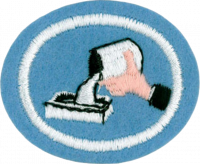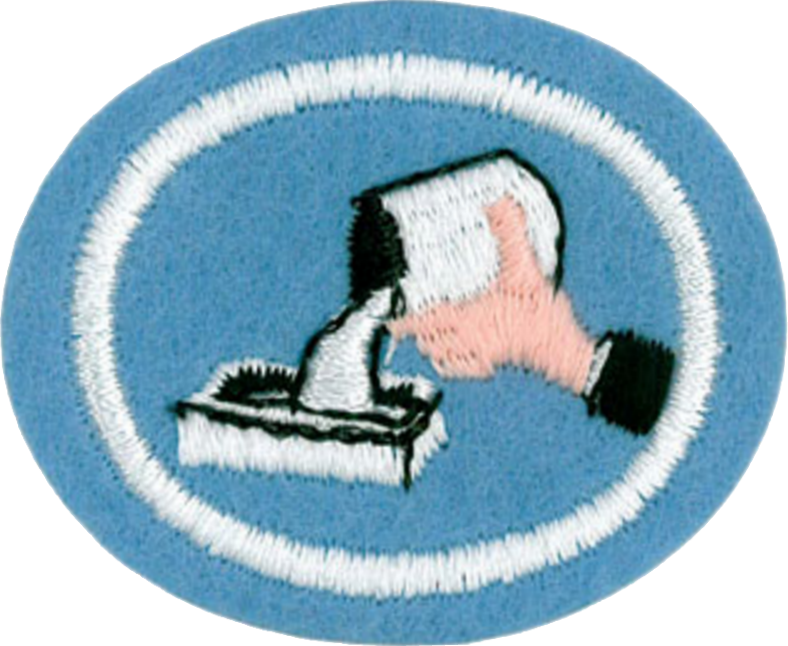Especialidades JA/Modelado en yeso/Respuestas
Nivel de destreza
1
Año
1967
Version
21.12.2025
Autoridad de aprobación
Asociación General
1
2
Pour cold water into a plastic mixing bowl, and then add the plaster powder to it, stirring as you go. Warm water will set faster - maybe too fast! Never add water to plaster - always add the plaster to the water.
| SAFETY TIPS |
|---|
|
Stir the plaster and water until it is well mixed. Allow it to sit for no more than two minutes to allow the plaster to fully absorb the water and quit bubbling. If desired, this is the time to add pigment for color. Add the pigment and mix it in with a power drill (using a paint mixing attachment). You can also use a potato masher, and for small amounts, you can just use a stick. If using a power drill, do not over do it, as blending it will hasten the setting time. Take it easy!
Pouring the plaster
Pour the wet plaster into one corner of the mold and allow the plaster to flow across to the other side. When the mold is full, tap it a few times to help work out any air bubbles. If you need a hanger, place it in the plaster at the top (pay attention!). You can buy hangers or you can use a paper clip. Make sure the hanger is well embedded in the plaster.
Releasing the mold
Once the plaster heats up, you can remove it from the mold. Do this by gently pulling the edges of the mold away from the cast piece. Work your way around until the mold has been separated all around (it's OK to let the mold snap back into place). Do not overflex the mold or you may crease it. Turn the mold upside down over the support base (the bag of rice) and gently shake it until the piece pops out. It should land gently on the support base. Set the piece aside to allow it to finish curing. For fastest curing, set the piece on a grate so that air may circulate over all surfaces.
3
4
5
6
7
8
- a. Flores (para mostrar sombras)
- b. Frutas (para mostrar resaltados)
- c. Animales (para mostrar líneas finas o detalles)
- d. Lemas religiosos (para mostrar letras resaltadas)
- Shading
For shading, paint the lighter color on to the piece. Then mix the darker color on you pallet and paint it on an adjacent area. Rinse and dry the brush, and then use it to blend the light and darker areas together.
- Highlighting
For highlighting a fruit, paint the entire fruit the color of your choice. While the paint is still wet, put a small amount of white paint on a clean brush and paint a small circle on the area you wish to highlight. Work the circle into the wet paint surrounding the highlighted area, blending the paint as you go.
- Fine lines
For fine lines, use a brush with a very fine tip. Add a small amount of paint to the brush and draw the tip over the area using a steady hand. Experiment with resting the base of your palm on a table as you paint (do your experiments on something other than your piece!) When you think you've got the hang of it, try it on your piece.
- Lettering
For raised lettering, paint the background first. Let it dry, and then carefully paint the top surface of the letters. For painting free-form letters on a flat surface, practice on some scrap first until you get the hang of it. Plan our what you will letter, being careful to center it on the piece.
9
The easiest items to cast are open-top molds. It is best to not try 3D or two-part molds until you have a little more experience, though these can certainly be used to fulfill this requirement. The reference links below offer hundreds of molds that you can purchase and reuse. You should also be able find molds at your local craft stores.
References
- http://www.onestopcandle.com/plaster/basicplasterinstr.php
- http://www.milliesplastercraft.com/BasicInstructions.asp
- http://spiritcrafts.stores.yahoo.net/ You can find all the molds you need on this one site.


